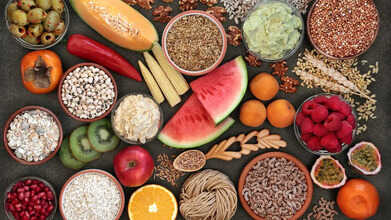- Health Conditions A-Z
- Health & Wellness
- Nutrition
- Fitness
- Health News
- Ayurveda
- Videos
- Medicine A-Z
- Parenting
- Web Stories
No Workouts, No Calorie Counting- Mom Of Two Lost 60lbs In 6 Months Without Doing Any Exercise

Image Credit: @therealangelinamarie
Losing weight is often associated with calorie counting, grueling workouts, and complex meal plans. But for Angelina Marie, a 30-year-old mother of two from Mississippi, shedding 60 pounds in six months came from doing the exact opposite of conventional weight-loss advice. She embraced the controversial carnivore diet—a meal plan that eliminates everything except animal products and water—and never stepped on a treadmill.
Her journey, initially met with skepticism, led to an astonishing transformation. Today, Angelina is healthier, leaner, and more confident than ever—all without a single cardio session.
Angelina’s weight had steadily climbed to 209lbs after years of struggling with processed foods and carb-heavy meals. Feeling desperate, she stumbled upon the carnivore diet while researching online. Unlike conventional wisdom, which promotes balance and variety, the carnivore diet eliminates fruits, vegetables, grains, and legumes entirely, focusing solely on meat, seafood, eggs, and dairy.
Determined to try something new, Angelina stocked her fridge with steaks and bacon, cutting out carbs overnight. Within just seven days, she had already lost 11lbs—a result that left her stunned. As weeks passed, the pounds continued to melt away.
"I couldn't believe the scale," she recalls. "It felt like my body was resetting itself."
Unlike traditional weight-loss programs that emphasize portion control and calorie counting, Angelina followed a simple yet structured eating plan:
Fasting until midday: Her first meal of the day usually consisted of scrambled eggs with bacon or scallops wrapped in bacon.
Dinner around 6 PM: This typically included a ribeye steak, pork chops, or chicken wings.
Snacking when hungry: She opted for beef jerky or meat sticks instead of carb-heavy snacks.
Hydration: Drinking ample water was crucial, and she also included high-quality electrolytes to prevent deficiencies.
No Exercise, Just Results
Contrary to popular belief, Angelina didn’t rely on intense workouts to achieve her transformation. In fact, she actively avoided exercise at the start of her weight-loss journey. Only after reaching her goal weight did she incorporate weightlifting—but solely to build muscle, not to lose more fat.
Interestingly, as she started strength training, she even gained a few pounds due to muscle mass increase, reinforcing that her initial weight loss was purely diet-driven.
Adopting an all-meat diet wasn’t entirely smooth sailing. Angelina warned her followers about the ‘carnivore flu’, a temporary condition experienced when the body adjusts to an extreme shift in diet.
"Your body isn't used to running on just fats and proteins while completely eliminating carbs," she explains. "Headaches, nausea, and diarrhea can happen, but they go away."
To counter these effects, she emphasized the importance of red meat over lean cuts, stating that fattier meats provide essential nutrients that help the body adjust more quickly.
Beyond shedding 62 pounds, Angelina experienced several unexpected health improvements:
- Reduced bloating: She no longer felt sluggish or bloated after meals.
- Clearer skin: Her complexion improved significantly.
- Better relationship with food: She learned to eat intuitively—only when hungry and stopping when full.
- Mental clarity and energy: Many carnivore diet followers report enhanced focus and stable energy levels.
Carnivore Diet: Is It Safe?
The carnivore diet is an extreme form of the ketogenic diet (keto), which forces the body into ketosis—a metabolic state where fat, rather than carbohydrates, becomes the primary energy source.
While advocates praise its benefits, research presents a mixed picture. Studies suggest that excessive consumption of red meat could increase risks of:
Heart disease: A study from Oxford University found that every additional 50 grams of red meat per day increases heart disease risk by 18%.
Type 2 diabetes: Harvard researchers found that people consuming two servings of red meat per week had a 62% higher risk of developing diabetes over time.
High cholesterol levels: Extreme cases have shown cholesterol so high that it physically leaked from the skin.
Nutritional deficiencies: The lack of fiber and vitamin C in an all-meat diet can lead to conditions like scurvy and gut health issues.
Despite these concerns, some experts argue that not all meat is created equal. Many studies fail to distinguish between processed meats (sausages, deli meats) and whole-food options like steak and fresh fish, which may not carry the same risks.
Should You Try the Carnivore Diet?
Health professionals remain divided on the long-term sustainability of the carnivore diet. While it may deliver rapid weight loss, experts strongly recommend incorporating nutrient-dense foods like vegetables and whole grains for overall well-being.
However, for individuals struggling with obesity, food cravings, or insulin resistance, a short-term carnivore diet could act as a reset before transitioning to a more balanced plan.
Angelina’s success story challenges traditional weight-loss norms. While the carnivore diet may not be for everyone, her journey highlights the importance of finding what works for your body—even if it contradicts mainstream advice.
"Now, I eat when I'm hungry, stop when I'm full, and focus on how I feel rather than what the scale says," she says. "This diet gave me my life back."
As the debate on the carnivore diet continues, one thing remains clear—what works for one person may not work for another. Before making drastic dietary changes, consulting a healthcare professional is always advised.
Is The Viral Wellness Trend ‘Fibremaxxing’ Helping Or Harming Your Gut?

Credits: CANVA
Tiktok fibremaxxing wellness trend: There is no shortage of wellness trends online that claim to transform your health, but a new one has taken over social media with a focus on gut health. It’s called “fibremaxxing,” and its premise is simple: eat more fibre to improve digestion, metabolism, immunity, and lower the risk of disease. On TikTok and Instagram, the trend often appears as colourful lentil bowls, chia puddings, and smoothies loaded with leafy greens and flaxseeds. But how much of this viral trend is actually backed by science?
The idea of increasing both soluble and insoluble fibre isn’t new, yet fibremaxxing has made it trendy again—and this time, for good reason. Fibre is vital to everyday health, supporting everything from steady blood sugar to regular bowel movements. Here’s what experts say about this growing movement and why fibre truly matters.
What Is Fibremaxxing?
Fibremaxxing is a social media movement that encourages people to boost their fibre intake by adding more fruits, vegetables, legumes, and whole grains to every meal. The goal is to improve digestion, promote fullness, and support long-term health. According to Dr. Urvi Shah, a board-certified hematologist-oncologist and physician at Memorial Sloan Kettering Cancer Center, the concept behind fibremaxxing is largely rooted in scientific evidence. Dr. Shah, who is leading multiple studies on high-fibre plant-based diets, notes that the approach aligns well with established nutrition research.
Is ‘Fibremaxxing’ Good Or Bad For Your Gut?
High-fibre diets are consistently linked to a wide range of health benefits, from lowering the risk of heart disease, diabetes, and colon cancer to aiding weight control and gut function. That’s why Dr. Shah believes fibremaxxing gets several aspects right.
She explains that including a wide variety of plant-based, high-fibre foods is essential because “different fibre types feed different microbes.” A diverse diet helps nurture a balanced microbiome. She adds that the trend’s emphasis on whole foods rather than processed or fibre-enriched items is a major plus. “Whole plants provide fibre, polyphenols, and micronutrients that work together to support the gut,” she says. Prebiotic-rich foods also help shape a healthier microbiota and increase the production of beneficial short-chain fatty acids like butyrate, which has “anti-inflammatory and anti-cancer effects.”
Simply put, upping your fibre intake through natural, unprocessed foods, rather than supplements, can make a real difference to gut health.
What’s The Daily Recommended Amount of Fibre Intake?
Experts suggest that adults should consume between 25 and 30 grams of fibre each day. Men typically require more (around 38 grams), while women need about 25 grams. These numbers can vary depending on age, sex, and calorie intake, but a general guideline is 14 grams of fibre for every 1,000 calories eaten, according to Harvard Health.
How To Add Fibre To Your Diet?
Plant-based foods are the easiest way to increase your fibre intake, this could mean starting your morning with oats or simply adding more vegetables to your meals. Dietitian Laura Tilt notes that several everyday foods are surprisingly high in fibre:
- Rolled porridge oats – 4.5g per 50g (half cup)
- Canned chickpeas – 7g per half can
- Seeded bread – 5g per two slices
- Canned lentils – 6g per half can
- Frozen peas – 4.5g per 80g (3 tbsp)
- Frozen raspberries – 5.5g per 80g (3 tbsp)
- Wholemeal pasta – 6.5g per 75g serving
- Dried apricots – 3g per 3–4 pieces
- Reduced salt/sugar baked beans – 7.5g per half can
- Mixed milled seeds (flax, pumpkin, chia) – 4.5g per 25g
Is Fibremaxxing Helpful?
There’s no doubt fibre plays an essential role in maintaining good health. But like any nutrient, too much of it can cause problems if not balanced properly. A sudden surge in fibre intake without enough water can lead to bloating, gas, constipation, dehydration, or even trigger IBS symptoms. Over-focusing on fibre might also cause you to overlook other nutrients your body needs. The key is moderation, fibre is beneficial, but it works best as part of a balanced, varied diet.
Why Cant I Digest Milk, But Can Easily Eat Yogurt?

Credits: Canva
If you landed here, the reason is that you are also someone who cannot tolerate milk, but loves yogurt, and are probably wondering why is that?
The logic is that if you have lactose intolerance, you won't be able to digest any dairy product, but with yogurt, your life is easy. The answer lies in the components of the two various dairy products that come from the same source.
Why Can't You Digest Milk?
The reason is because you are lactose intolerant. This is a condition that makes it hard to digest the sugar in milk and milk products, called lactose. People with lactose intolerance could have diarrhea, gas and bloating after they consume milk. While this condition is usually harmless, it can cause discomfort.
This happens because the enzymes in the small intestine, called lactase is responsible for lactose intolerance. If someone has too low levels of lactase, the person can become lactose intolerant.
The small intestine and colon are parts of the digestive tract, which processes the foods you eat. The intestine pull out nutrients from the food and whatever is not absorbed by the intestines continues along the digestive tract and is expelled as stool during a bowel movement.
But Why Can You Digest Yogurt, If You Cannot Digest Milk?
The answer to this lies in the fermentation process that turns milk into curd and breaks down much of the lactose, which is the sugar, that is often difficult to digest. The probiotic bacteria used to make curd contain their own lactase, which helps in the breakdown of lactose, and this can further help with digestion even for those who do not produce enough lactase on their own.
Furthermore, during fermentation, the bacteria in curd, called the Lactobacillus bulgaricus and Streptococcus thermophilus convert lactose into lactic acid, which is easier for the body to process. This helps your body to digest curd easily over milk. Since the bacteria contains lactase, which the milk lacks, some people may find it easier to digest curd or yogurt over milk.
The bacterial cells also physically protect their lactase, and it can work to break down the lactose from the curd as it passes through the digestive system.
Why Is Curd Gut-Friendly?
The key to a healthy gut health is lactobacillus, a kind of probiotic, which helps in digestion, suppression of disease-causing bacteria and treats constipation. It also is beneficial in treating irritable bowel syndrome. It breaks down sugar into lactic acid.
A study by a Bhubaneswar-based professor Balamurugan Ramdas also revealed that Bengal or Odisha's popular breakfast Panta Bhaat, which includes fermented cooked rice, also releases the same bacteria, that fermented milk releases and so it contains short-chain fatty acids, which are responsible for improving gut health and boosting immunity.
Furthermore, curd is known to balance the gut flora, probiotics improve digestion, and the absorption of nutrition. They also help in the breakdown of food, reducing issues like bloating, gas, and constipation. The probiotics in curd can help restore the natural balance in your gut, which can soothe an upset stomach and alleviate discomfort from indigestion. A healthy gut is closely linked to a strong immune system, and the probiotics in curd help to boost gut health, which in turn can enhance immunity.
Does What Time You Eat Breakfast Reveal How Long You Will Live? Study Reveals Why Time Matters For Breakfast

(Credit-Canva)
While people do take eating healthily seriously, many people forget to take the timing into consideration. Many studies have shown that eating late at night or midnight snacking is bad for your metabolism and makes you gain weight, but does the same logic apply to how early you eat your breakfast? A new published in Communications Medicine explains why the timing may be important, even for breakfast.
The time you eat breakfast could play a surprising role in your overall health and even influence how long you live. New research suggests that for older adults, meal timing, especially when they eat their first meal, may reveal important clues about their health status. The study found that eating breakfast later in the day was linked to higher rates of health issues like depression, fatigue, and dental problems, along with a greater risk of early death.
Experts believe that changes in an older person's meal schedule, particularly breakfast time, could be an easy way to check on their general health. He suggests that encouraging older adults to stick to regular mealtimes could be an important step in promoting healthy aging and a longer life.
How Does Breakfast Timing Affect Health?
The research followed almost 3,000 adults in the U.K., aged 42 to 94, for over 20 years. The people in the study reported their usual times for breakfast, lunch, and dinner, along with details about their health.
Meal Times Shifted Later with Age
As the participants got older, both their breakfast and dinner times gradually became later. For every ten years of life, breakfast was delayed by about eight minutes and dinner by four minutes.
The Serious Connection
Most importantly, delaying breakfast was linked to having more long-term health problems and a higher chance of death during the study period. For every hour breakfast was delayed, the risk of death went up by 8–11%.
Experts emphasized that eating later, especially delaying breakfast, is tied to both health problems and a higher risk of death in older people. This finding gives new weight to the old saying that breakfast is the most important meal of the day, especially for seniors.
Why an Early Breakfast is Better for Your Health
While this study can't definitively prove that eating earlier directly causes a longer lifespan, experts agree that the evidence strongly supports a regular, early breakfast habit.
Work with Your Body's Clock
Experts recommend having breakfast within one to two hours of waking up. Experts also explained that our body's ability to process food is best right after we wake up.
Avoid Health Risks
Skipping or heavily delaying breakfast can lead to dangerous spikes in blood sugar later in the day. These spikes can hurt blood vessels, increase body inflammation, and raise the risk of serious illnesses like type 2 diabetes and heart disease.
Keep Your System in Sync
Eating early helps keep your body's internal 24-hour clock (circadian rhythm) working correctly. This proper timing supports better metabolism and better sleep patterns throughout the day.
The Importance of Routine
Health experts strongly emphasize that the consistency of your mealtimes is just as important as the time itself. Eating at regular times helps keep the body's natural 24-hour rhythm strong, which controls everything from digestion to hormones.
A healthy life includes a routine of exercise, good sleep, social connections, and healthy eating habits, which means being thoughtful about what you eat and when you eat it.
By regularly eating breakfast and dinner earlier, you match your eating pattern with your body's natural cycle. This can help you avoid eating too much late at night and supports better sleep. Having a simple, consistent breakfast may be one of those small, daily choices that add up to a longer, healthier life.
© 2024 Bennett, Coleman & Company Limited

